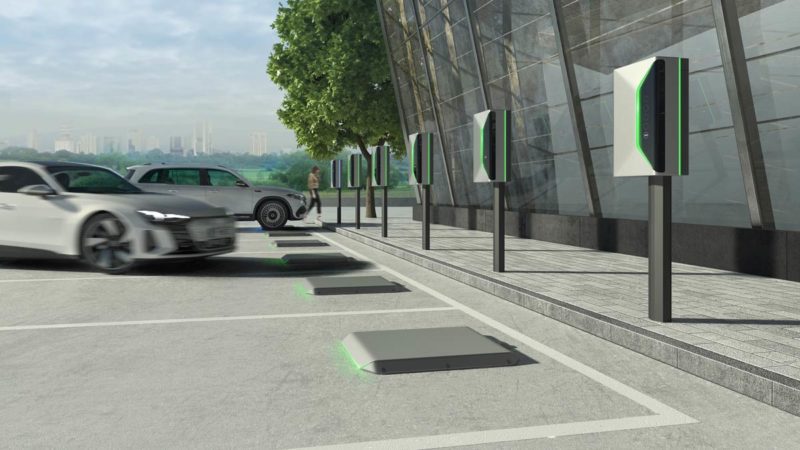Charging your electric car without having to plug could be something of a holy grail for EV owners.
Two leading industrial tech companies – Siemens and Mahle – say they want to ensure that wireless EV charging – assuming it becomes mainstream – can be implemented in a way that will future-proof homes and carparks.
Siemens, one of the most recognisable German industrial manufacturing companies, and Mahle, a German automotive parts manufacturer, announced on Tuesday that they had signed a letter of intent to collaborate in the field of inductive charging of electric vehicles.
“Wireless charging of electric vehicles is emerging as a major market for the future,” said Stefan Perras, head of pre-development and innovation for charging onfrastructure at Siemens.
“In addition to making life considerably easier for drivers, who no longer have to fiddle with cables and connectors, it is a crucial requirement for the autonomous mobility of tomorrow. The transfer efficiency of wireless, inductive charging is comparable to plug-in systems.”
One aspect of the two companies’ planned cooperation will focus on coordination standardisation efforts in the relevant pre-standardisation and standardisation bodies in an effort to ensure greater interoperability between vehicles and charging infrastructure.
Siemens and Mahle plan to compare ideas and experience to develop a complete charging system for electric vehicles, and develop what they describe as “extensive interoperability and cross-testing” between the charging equipment including the secondary coil on the vehicle, and the primary coil on the charging infrastructure.
Siemens has already made a move into this space, investing $US25 million in June in wireless charging specialist WiTricity.
Joshua S. Hill is a Melbourne-based journalist who has been writing about climate change, clean technology, and electric vehicles for over 15 years. He has been reporting on electric vehicles and clean technologies for Renew Economy and The Driven since 2012. His preferred mode of transport is his feet.

